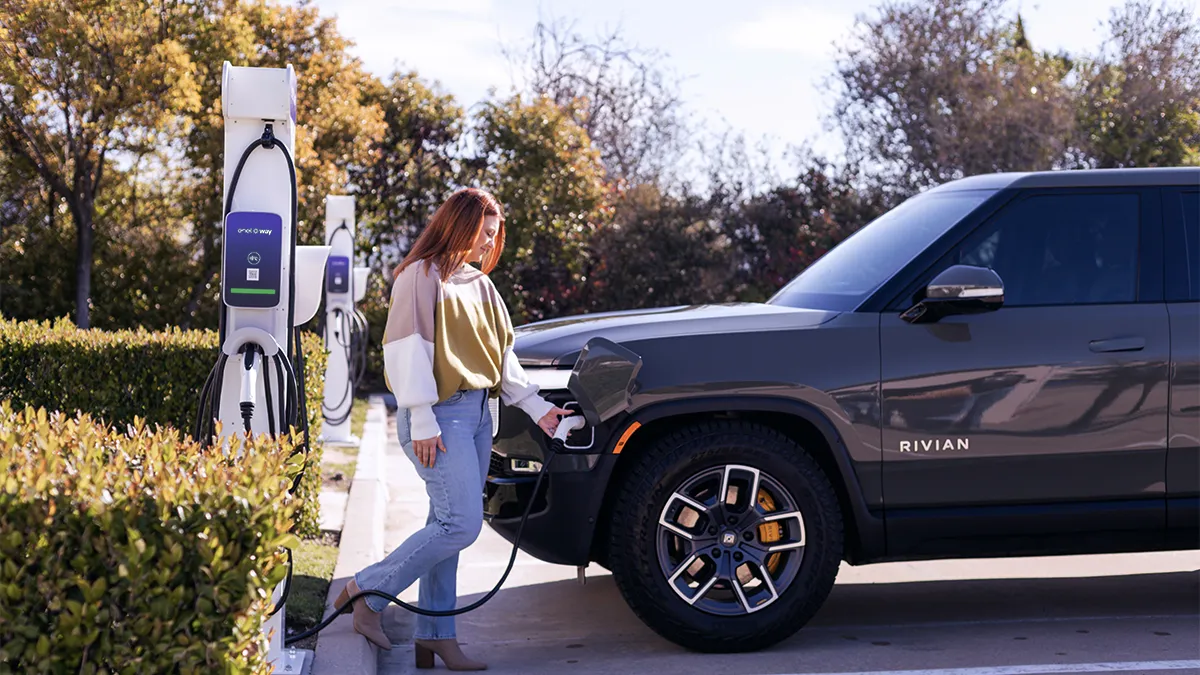Bryan Jungers is director of mobility at E Source.
When it comes to transportation electrification, most utilities have been in a hurry-up-and-wait mode for the past few decades. While EVs are not new, nor is the pressure to prepare for them, there have been so many false starts that it’s hard for utilities to be sure that this time it’s for real. As a long-time industry watcher, I believe it is for real, and the chicken-and-egg problem of electric vehicles vs. charging infrastructure is settled: both are needed ASAP.
A new paradigm
What if you could build a new grid and utility from the ground up? Would it look anything like what we currently have today? With new information and the benefit of hindsight, chances are it would not.
We need to bring new vision to the work of planning for a modern grid that can support electrification, decarbonization and equity goals for the economy and society. We need to prepare for a future that looks very different from the present while learning from prior experiences deploying charging infrastructure and early utility efforts to design and implement customer EV programs.
Below are some of the lessons we’ve learned from past efforts to electrify transportation:
Don’t put all your eggs in one basket
No single solution provider can electrify the entire transportation system on its own. Federal infrastructure projects are large, expensive and take years to roll out. The management, reporting and coordination requirements are extensive. For large EV charging infrastructure deployment projects to be successful, they require a competent team of multiple solution providers and other stakeholders working together closely.
Future-proof your investments and programs by designing them to be technology- and vendor-agnostic, open to as many solution providers and customer choices as possible.
Everything takes longer and costs more than you expect
During the first wave of government spending in support of grid modernization, we greatly underestimated how much time and effort is required to deploy new technologies, from smart meters to EV charging stations. While it is tempting to establish “competitive” project proposals with aggressive timelines and tight budgets, this is almost never a good idea in practice.
In particular, don’t forget to give careful consideration to operation and maintenance requirements and costs upfront. While there are always incentive dollars available to help reduce capital expenses, incentives for O&M are almost nonexistent. After the ribbon-cutting fanfare ends, the real work of operating distributed, remote and technical equipment begins. Having an asset-management plan is critical.
Get your supply and demand sides on the same side
Communication, transparency and shared data are critical to the planning process, especially when it comes to harmonizing supply- and demand-side planning. With transportation electrification top of mind, now’s the time for utilities to break down internal silos and advocate for what’s needed.
We’ve learned that working effectively in cross-disciplinary teams and sharing information usually leads to better outcomes, but we can do even better: let’s expand this coordination across other utilities and stakeholder groups. For example, we’re witnessing incredible developments in the state of New York where utilities are sharing information to establish a statewide Integrated Energy Data Resources tool.
Don’t forget to swim upstream
EV manufacturers are making decisions every day that affect utilities, but many utilities aren’t collaborating with OEMs (or other utilities) where they have a vested interest, e.g., managed charging, charging infrastructure, vehicle-to-grid standards and power quality requirements. You can react to what happens upstream, or you can influence it.
Two areas where utilities should be actively moving upstream to influence distributors and manufacturers are in vehicle telematics and medium- and heavy-duty vehicle manufacturing. We’ve seen that a reactive position in these two critical areas leads to products and services that do not match utility program requirements or service grid needs.
Get ready: Batteries are coming
Utilities are transitioning from serving stationary loads to becoming fuel providers for the clean energy economy, and batteries (both stationary and mobile) will forever and fundamentally change the grid. Costs continue to come down as installed capacity grows.
As the full cost of installing a battery power plant drops, storage will be a foundational part of our grid infrastructure. Batteries will buffer solar insolation lows, wind doldrums and volatile gas pricing. And ultimately, they’ll replace peaker plants.
Standardization will be key at every level
Mobility is its own ecosystem, and there are many moving parts — OEMs, charging equipment, utilities, government agencies, fleets, communications and more. Perhaps the most visible example of a challenge related to standardization is Tesla’s agreement to open its charging networks to rival EV makers.
It’s one thing to juggle different charging device types; it’s another thing entirely if you have to work around multiple approaches at a component or software level. Many important conversations are already happening; for example, The Federal Highway Administration and the U.S. Department of Transportation recently set new standards for DC fast chargers operated along clean corridors.
Utilities need to engage and proactively shape the conversation, and even initiate them as needed.
The when, not if, of transportation electrification
Changing market dynamics, new policies, and incentives will continue to influence many of the details of how transportation electrification evolves, but what isn’t changing is that it’s a coming certainty.
Unlike in the past, we have many more resources to work with — from an influx of funding to more-sophisticated data modeling and even the plans of peer utilities — that will make transportation electrification planning more efficient, effective and impactful.






















